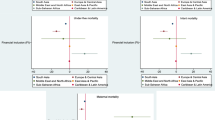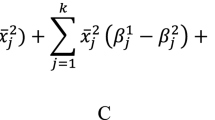Abstract
Q-analysis, introduced by a mathematician Ron Atkin, is a useful tool to explore social structures. I introduce essential concepts and techniques of q-analysis to show q-analysis’s potential ability to analyze and extract information from census data – the work that most researchers have done mainly with statistical methods. Using Mexican census and q-analysis, I examine whether children of female-headed household aged 15–19 were more likely to attend school than male-headed household children in Chiapas, Mexico in 2000. My findings are consistent with the large body of previous research, many of which were conducted with statistical methods: women’s control of income tends to results in a better welfare for their children, defined as children’s school attendance by the sex of heads of household in my study. I evaluate the advantages and disadvantages of a-analysis of census data. I conclude that while it has some weaknesses, q-analysis is a complimentary method to statistical methods for analysis of census data that may overcome some limitations that statistical methods often face such as an incapability of handling a small sample.
Similar content being viewed by others
References
B. Agarwal (1994) A Field of One’s Own: Gender and Land Rights in South Asia Cambridge University Press Cambridge
R. Atkin (1977) Combinational Connectivities in Social Systems: An Application of Simplifical Complex Structures to the Study of Large Organizations Birkhäu, Birkhäuser Verlag Basel and Stuttgart
R. Atkin (1981) Multidimensional Man Penguin Books Harmondsworth
L. Benería M. Roldán (1987) The Crossroads of Class & Gender: Industrial Homework, Subcontracting, and Household Dynamics in Mexico City The University of Chicago Press Chicago and London
R.S. Blackburn (1982) ArticleTitleDimensions of Structure: A Review and Reappraisal Academy of Management Review 7 59–66 Occurrence Handle10.2307/257249
P.M. Blau O.D. Duncan (1967) The American Occupational Structure John Wiley & Sons Inc. New York, London and Sydney
Borgatti, S. P., Everett, M.G. and Freeman, L.C. (1999). UCINET 6.0 Version 1.00. Natick: Analytic Technologies.
S.C. Bourque K.B. Warren (1981) Women of the Andes: Patriarchy and Social Change in Two Peruvian Towns University of Michigan Press Ann Arbor
J.G.L. Cruces C.R. Romero (2001) La población de México: Tendencias y Perspectivas Sociodemográficas Hacia el Siglo XXI Consejo Nacional de Población México, D.F.
C.D. Deere M. León (2001) Empowering Women: Land and Property Rights in Latin America University of Pittsburgh Press Pittsburgh
C.D. Deere (1990) Household and Class Relations: Peasants and Landlords in Northern Peru University of California Press Berkeley, Los Angeles and Oxford
P. Doreian (1982a) ArticleTitleLeveling Coalitions as Network Phenomena Social Network 4 27–45 Occurrence Handle10.1016/0378-8733(82)90012-0
Doreian, P. (1982b). On the Delineation of Small Group Structures. 215–230 in Classifying Social Data: New Applications of Analytic Methods for Social Science Research, contributed by Herschel C. Hudson. San Francisco: Jossey-Bass.
C.E. Eber (1999) ArticleTitleSeeking Our Own Food: Indigenous Women’s Power and Autonomy in San Pedro Chenalhó, Chiapas (1980-1998) Latin American Perspectives 26 6–36 Occurrence Handle10.1177/0094582X9902600302
P.L. Engle (1995) Father’s Money, Mother’s Money, and Parental Commitment: Guatemala and Nicaragua R.L. Blumberg C.A. Rakowski I. Tinker M.M. Boulder (Eds) EnGENDERing Wealth and Well-Being Westview Press San Francisco and Oxford 155–179
B.J.D. Fuller Singer M. Keiley (1995) ArticleTitleWhy Do Daughters Leave School in Southern Africa? Family Economy and Mothers’ Commitments Social Forces 74 657–680 Occurrence Handle10.2307/2580496
P. Gould A. Gatrell (1979) ArticleTitleA structural analysis of a game: The Liverpool vs Manchester United Cup Final of 1977 Social Network 2 253–273 Occurrence Handle10.1016/0378-8733(79)90017-0
P. Gould (1980) ArticleTitleQ-analysis, or a Language of Structure: An Introduction for Social Scientists, Geographers and Planners International Journal of Man-Machine Studies 13 169–199 Occurrence Handle10.1016/S0020-7373(80)80009-5
C. Halaby (2003) ArticleTitleWhere job values come from: Family and schooling background, cognitive ability, and gender American Sociological Review 68 251–278 Occurrence Handle10.2307/1519768
S. Hamilton (2002) ArticleTitleResearch reports and notes: Neoliberalism, gender, and property rights in rural mexico Latin American Research Review 37 IssueID1 119–143
T.L. Jacobson W. Yan (1998) ArticleTitle Q-analysis techniques for studying communication content Quality & Quantity 32 93–108 Occurrence Handle10.1023/A:1004255229611
T. Jacobson (2003) Visualizing Information Seeking with Q-analysis Paper presented at a non-divisional workshop held at the meeting of the International Communication Association San Diego, CA
Legrand, J. (2002). How far can Q-analysis go into social system understanding? Fifth European Systems Science Congress. Crete, Res-Systematica http://www.afscet.asso.fr/ resSystemica/Crete02/Legrand.pdf.
N. Lustig (1996) The 1982 debt crisis, Chiapas, NAFTA, and Mexico’s poor L. Randall Armonk (Eds) Changing Structure of Mexico: Political, Social, and Economic Prospects M.E. Sharpe, Inc. New York and London 157–165
C.C. Luzuriaga (1982) Situación de la mujer en el Ecuador Maurilia Mendoza Quito
S.W. Parker C. Pederzini (2001) Gender differences in education in Mexico G.K. Elizabeth M.C. Correia (Eds) The Economics of Gender in Mexico: Work, Family, State, and Market World Bank Washington D.C. 9–45
D. Post (2001) Children’s Work, Schooling, and Welfare in Latin America Westview Press Cambridge, MA
Quisumbing, A. R. and Maluccio, J. A. (2000). Intrahousehold Allocation and Gender Relations: New Empirical Evidence from Four Developing Countries. International Food Policy Research Institute, FCND Discussion Paper #84, Washington, D.C.
Sobek, M. Ruggles, S. and McCaa, R. et al. (2004). Integrated Public Use Microdata Series-International: Preliminary Version 1.0.Minneapolis: Minnesota Population Center, University of Minnesota. http://www.ipums.org/international.
D. Thomas (1990) ArticleTitleIntra-Household Resource Allocation: An Inferential Approach The Journal of Human Resources XXV 635–664 Occurrence Handle10.2307/145670
World Bank. (2004). World Development Indicators. Retrieved from www.worldbank.org/data/wdi2004/index.htm.
Author information
Authors and Affiliations
Corresponding author
Rights and permissions
About this article
Cite this article
Yoshioka, H. A Q-Analysis of Census Data: Intra-Household Income Allocation and School Attendance in Chiapas, Mexico. Qual Quant 40, 1061–1077 (2006). https://doi.org/10.1007/s11135-005-5080-8
Issue Date:
DOI: https://doi.org/10.1007/s11135-005-5080-8




